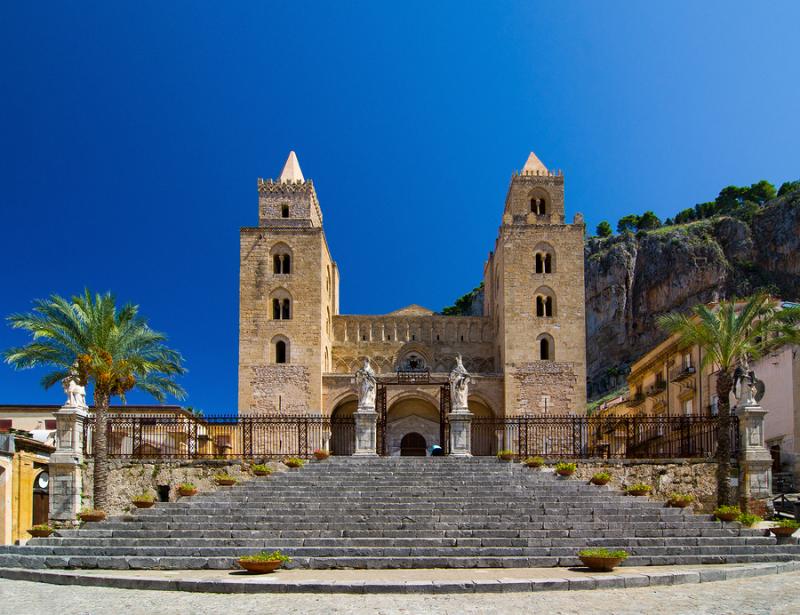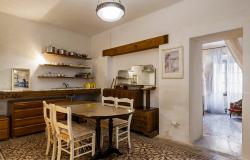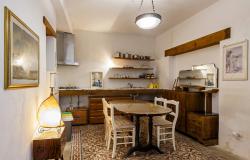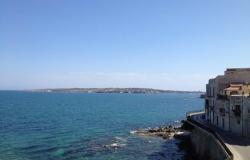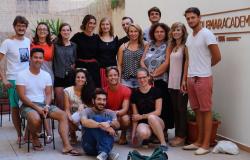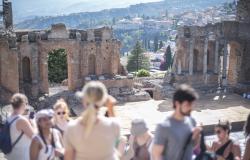The profile of the Norman Cathedral is the most recognizable element of Cefalù’s urban skyline. With its imposing two towers, the building has stood out against the houses and the sea of this seaside town near Palermo in Sicily for nine centuries.
Earlier this year, the towers of Cefalù’s Cathedral have become accessible to the public for the first time.
The so-called ‘Itinerarium Pulchritudinis’, or ‘Itinerary of Beauty’ starts right after entering the main door, with the ascent up the northern tower through a stone staircase. Archeological finds, remains of frescoes and town views from the ancient windows accompany the ascent.
Between the two towers, an outdoor corridor affords a unique view over the interior of the church, which features three naves and granite columns and of the stunning mosaics of the apse, the work of Byzantine artists.
The southern tower is empty inside revealing how massive the structure is. A walking path along its perimeter affords views from the windows toward the sea and the ancient quarters of Francavilla, which housed those who worked on the construction of the cathedral. Looking down, one can see fragments of flooring dating from the 1st century AD. The church was built on the site of what was originally a Greek-Roman neighborhood.
The rest of the itinerary takes place inside the Cathedral, which was built starting in 1131 under the Norman emperor Roger II (Sicily was conquered by the Normans in 1091). According to legend, Roger II ordered the construction of the church as a way to give thanks to God after his boat was saved from a storm when it landed on the city’s beach. Historians claim that the site was settled because located halfway between Messina and Trapani, therefore it was in a strategic position to control the coast and the sea.
In addition to the distinctive two towers that flank the façade, the Cathedral houses precious Byzantine mosaics that cover the walls of the presbytery, the apse and the vault. Roger II brought masters in the technique of mosaic from Constantinople.
The Cathedral of Cefalù is one of nine structures included in the UNESCO World Heritage Site known as ‘Arab-Norman Palermo and the Cathedral Churches of Cefalù and Monreale.’
